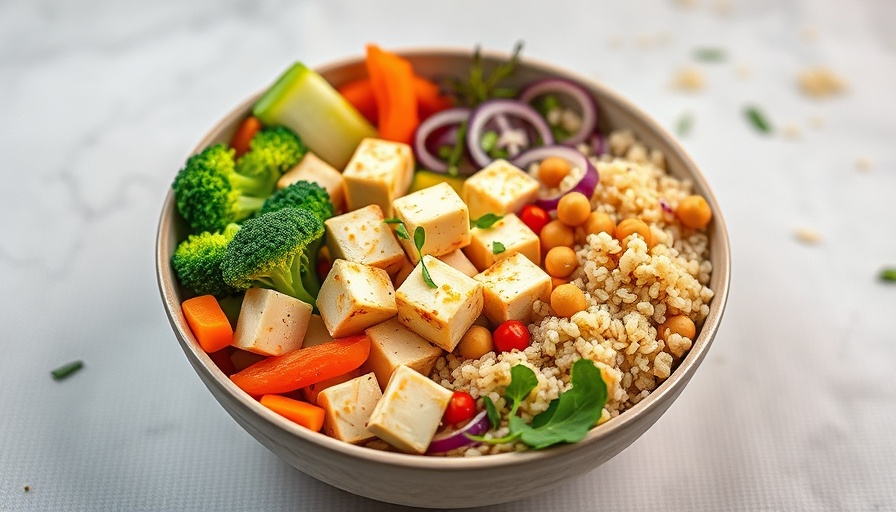
Unpacking the Impacts of Heme Iron in Plant-Based Meats
The shift toward plant-based diets has been hailed as a healthful and eco-friendly initiative, but what lies in the details? Recently, the discussion around heme iron—an iron-containing molecule often added to plant-based products like Impossible Burgers—has surfaced, prompting vital questions about its health implications. As people aged 18 to 60 increasingly seek healthier dietary alternatives, understanding the nuances of heme iron becomes imperative.
Is Heme Iron a Health Concern?
Heme iron is known to enhance flavor and improve the appearance of meat products. Yet, this compound, mainly derived from animal sources, has been linked to various health risks. Research indicates an association between high heme iron consumption and increased risks for conditions such as type 2 diabetes, heart disease, and even certain cancers. Critics argue that while synthetic heme from plants might seem innocuous, its biological implications could mirror those of heme from meat, as both can promote inflammation and insulin resistance.
The JAMA Editorial's Alarm on Meat Consumption
An editorial in the Journal of the American Medical Association has sparked a wave of concern, suggesting that plant-based meats, particularly those enhanced with heme, must be scrutinized. Although FDA safety analyses deem plant-derived heme safe, the editorial underscored that such products can often be loaded with sodium and deficient in the nutrients that make whole foods beneficial. As consumers, it’s essential to not only consider these products' ingredients but also their nutritional profiles.
The Dual Role of Meat, Heme, and Health Risks
A significant concern with heme’s health implications is the potential confounding factors from other meat components. For example, meats also contain saturated fats and hormones that could contribute to diseases. Thus, observing a correlation between heme intake and health risks may obscure the broader effects of animal-based diets. The NIH-AARP Diet and Health Study, one of the largest in its scope, found conflicting evidence—attributing some health risks directly to heme, but much remains to be dissected.
What Research Says about Heme Iron and Diabetes
Research from Harvard's T.H. Chan School of Public Health indicated that heme iron, unlike non-heme iron from plant sources, elevates the risk of developing type 2 diabetes. This influence is amplified when paired with high-sodium diets, which are prevalent in many processed foods. The integration of comprehensive dietary data with biomarkers has emphasized the need for greater scrutiny not only on the quantities of heme consumed but also on the sources from which it comes.
The Balance Between Convenience and Nutrition
With the rise of plant-based meats, consumers face the challenge of balancing taste and health. While the appeal of savory, meaty flavors can be enticing, making informed choices about which products to consume is vital. Enjoying occasional indulgences in plant-based burgers does not inherently mean one is compromising on health. However, understanding the ingredients and their implications can empower consumers to select better options.
Take Action: Promote Awareness and Healthy Choices
It's essential for everyone, especially younger adults, to advocate for better food education and to challenge food companies to provide clearer nutritional information. By making aware, informed choices, individuals can align their eating habits with their health goals. As plant-based diets gain traction, let's ensure our choices reflect an understanding of not just what tastes good, but what promotes long-term health.
 Add Row
Add Row  Add
Add 




 Add Row
Add Row  Add
Add 

Write A Comment